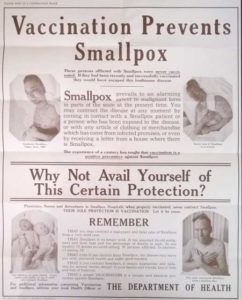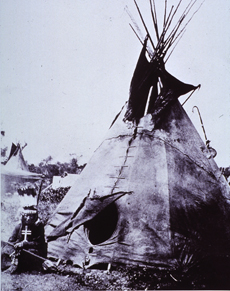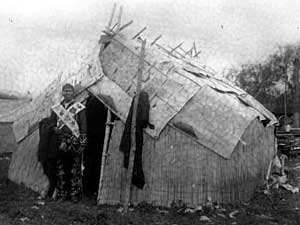
Blankets Infected With Smallpox Were Distributed to Native Americans to Start an Epidemic, courtesy sphtc.org
Though there is no mention of any smallpox epidemics at the Canton Asylum for Insane Indians, the threat of this terrible disease was very real. Smallpox had devastated Native American communities once Europeans arrived, since native peoples had no immunity to a disease they had never encountered. Mortality estimates range from 50% for the Cherokee, Catawba, and Huron, and as high as 90% for the Mandan after first contact.
Native Americans did not immediately connect smallpox to the Europeans who brought it. Plains tribes thought the disease was the Bad Spirit appearing, while the Creeks and Cherokees thought it came to them because they had violated tribal laws. Missionaries and Jesuits were later blamed for smallpox because of their religious paraphernalia and concern about dying, and they may well have carried infection to the various peoples they visited in the course of their work.
By the early 1900s, Native Americans were well aware that Europeans had brought this tremendous disaster with them. In 1914, Dr. Harry Hummer vaccinated 48 patients and five employees against smallpox. (Another five employees had previously contracted smallpox, and 13 refused the vaccination.) Hummer asked the Commissioner of Indian Affairs what he should do about the employees who had refused the vaccine, and he had a right to be concerned. Considering the frail health that many of his patients endured, smallpox would have been an overwhelming illness for them to fight.




